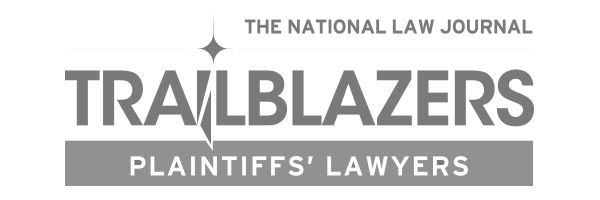HBSS Secures $1.4 Billion Settlement in Toyota SUA Case
In 1935, Austrian physicist Erwin Schrödinger, a contemporary of Albert Einstein, postulated a thought experiment in which a live cat was placed inside a box. The box would be connected to a device that might, or might not, kill the cat, depending on whether or not a single microscopic radioactive particle changed its state.
Schrödinger theorized a complex system involving Geiger counters and a particularly lethal type of acid. Einstein felt the experiment was far too complicated, filling the theoretical box with a pistol, loaded with one bullet, which may or may not fire.
Though it is probably worth asking why these Austrian physicists seem to have such a hatred of cats, Schrodinger was making an interesting point. He was, in a sense, trying to provide a scientific answer to the question, “if a tree falls and no one is there to hear it, does it make a sound?”
You see, a core part of quantum mechanics claims that the smallest microscopic particles do not decide which direction to spin or how to behave until we look at them. Until we look at them, their state is undetermined.
Schrödinger hypothesized that if one could build a machine that would make a cat’s life forfeit based on the movement of a single, small particle, and walked out of the room while the experiment ran, the cat would not technically be alive or dead until someone opened the box and took a look inside.
A similar phenomenon can be found in litigation. Often, when millions of dollars are on the line and the outcome of a case is uncertain, it is not worth taking the all-or-nothing risk of seeing litigation through to the very end. Doing so is like opening Schrödinger’s box; the cat may be alive or it may be dead and the case may be completely viable or the jury may vote an acquittal on all charges.
Sometimes, no matter how many millions of documents are read, no matter how many witnesses are deposed, you just don’t know how a case will end until you open the box and find out. In cases involving millions or even billions of dollars in damages that risk may not be worth taking. When that happens, it is our job, as plaintiffs’ attorneys, to fight tooth-and-nail for our clients to ensure they receive a settlement that recognizes the merit of their claims while avoiding the risk of a complete loss at trial.
We recently had just such a case. Back in 2010, a media firestorm erupted when Toyota owners across the United States reported that their vehicles were accelerating suddenly out of their control. Toyota issued several recalls impacting millions of vehicles, but reports of sudden, unintended acceleration (SUA) continued to flood in.
Many, myself included, speculated that the recalls, which included floor mats and accelerator pedals, failed to address a possible defect in the electronic throttle control system (ETC), the system that links the accelerator pedal to the engine. If such a defect did exist, Toyota’s recalls were not adequately protecting consumers.
Moreover, as reports of accidents continued to pour in, the trade-in and resale values of Toyota vehicles plummeted. Consumers attempting to sell or trade in their vehicles received less than they would have before the alleged defect became public.
We filed a lawsuit on behalf of owners and lessees of those Toyota vehicles, asking for Toyota to compensate them for the reduction in value. Proving our case would require us to demonstrate a defect causing SUA that Toyota had failed to address.
As the case worked its way through the courts, we read millions of internal Toyota documents, attempting to uncover whether Toyota knew, or should have known, about a defect in the ETC system.
At the same time, Congress, the National Highway Traffic Safety Association (NHTSA), and engineers at National Aeronautics and Space Administration (NASA) investigated the issue, questioning Toyota engineers and inspecting vehicles to see if they could replicate the issue and demonstrate a defect in the ETC system. Ultimately, both NHTSA and NASA engineers were unable to reproduce SUA in Toyota vehicles. They concluded that driver error, among other causes, was the most likely explanation for SUA events.
We strongly disagreed with NHTSA and NASA’s findings. Simple driver error could not explain the hundreds of incidents being reported. It also could not explain the number of reports claiming that pushing the brake pedal and shifting to a neutral gear failed to stop vehicles from accelerating out of control.
Still, we knew that with so much evidence and so many witnesses, it would take years before we finally uncovered the truth, and continuing the litigation carried certain risks for the plaintiffs. If the court dismissed the case, or a jury in one of the first cases acquitted Toyota, the plaintiffs might receive nothing.
So, we weighed our options carefully and worked with Toyota to come up with a settlement agreement that would both make Toyota vehicles safer and compensate owners and former owners who realized economic losses when they attempted to sell or trade in their Toyota.
The settlement we agreed to, which must now be approved by the court, does all of that and much more. It includes benefits for the class worth up to $1.4 billion, making it the largest automotive defect settlement in history. It includes $250 million for Toyota owners who sold their cars, another $250 million for Toyota owners whose vehicles are not eligible for a brake-override system and an expanded warranty program for all current owners, lasting up to ten years for certain parts.
Ultimately, we feel that the settlement is fair, and we look forward to working with the court to finalize it. There are those who might have hoped for more, or hoped we could demonstrate conclusively that Toyota vehicles suffered from a SUA defect in a full jury trial. However – at the end of the day we felt like Schrödinger and Einstein; without opening the box we couldn’t be sure what might happen. In a case this complicated, we felt that the risks of litigation were not in the best interests of consumers, especially when we were able to achieve such a generous settlement that will make an immediate and positive difference in the safety of Toyota vehicles.





